“Libraries are thin red line between civilization and barbarism “ - Neil Gaiman
Never has a truer word been spoken, like the accurate description of Library, by the famous English author - Nel Gaiman. Libraries have indeed been a milestone in developments of all major civilizations in the world and they have helped in spread of knowledge and information between people since time immemorial. Every culture of ancient times had recorded their achievements in some form, starting from the ancient cuneiform languages. These collections were to give rise to the concept of Library later on. Without these records, It would have been impossible to know so much about events that have happened thousands of years back. It is certainly not possible to describe all the libraries, of all the civilizations spanning the whole globe, but an attempt has been made to describe a few important ones.
The story of this library starts a very- very long time back, in Iron age Mesopotamia (an area corresponding to modern day - Iraq, Kuwait and parts of Syria, Saudi Arabia and Turkey. This kingdom was the centre of Neo Assyrian Empire, the largest Empire of the time. Ashurbanipal was the ruler of this empire from 668 BC to 627 BC. The King was not just ambitious, but also an educated, capable and very efficient ruler. Records go on to prove that the king was an expert soldier, horseman, hunter and an expert charioteer & was also an avid scholar with an ability to read and write in 3 different languages of the time - Akkadian, Aramaic and Sumerian.
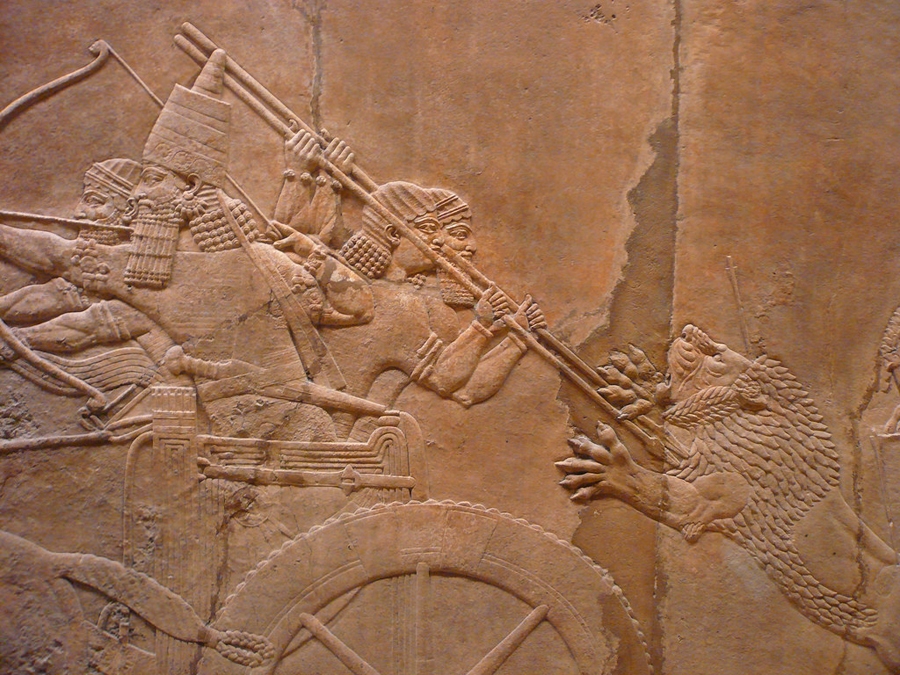
Being an erudite ruler and he was aware of the fact that knowledge and education is important for development of a society. In an act ,which can be described as partially for fulfilment of his ego and partially his genuine wish for accumulation of knowledge, he decided to create the greatest Library of his time. For this he collected texts and copies of his literary works, containing important knowledge of the time, from all over his empire --in the Library in Nineveh, the capital city of his empire. The library was considered as one of the greatest of it’s time, not just because of the quantity of the text, but also because of variety. The subjects covered in those texts included - medicine, science, mathematics, astrology, poetry, geography, magic and mythology. Epic of Gilgamesh, which is considered as the oldest epic to be ever written ,was present in this library.
The library was destroyed few years after his death (15 years to be precise)in a time, when Neo- Assyrian Empire, was reaching close to it’s doom. Slowly the Library faded from people’s memory, till the British reached Nineveh, in middle of 19th century. They excavated the site and discovered the great Library. So the legacy of one of the oldest empire was discovered by another archaeologist, from one of the greatest empire of 19th century. They discovered 30,000 clay tablets (and their fragments) from the site, which gave a lots of information, about a bygone era & a king whose vision, withstood the ravages of time.
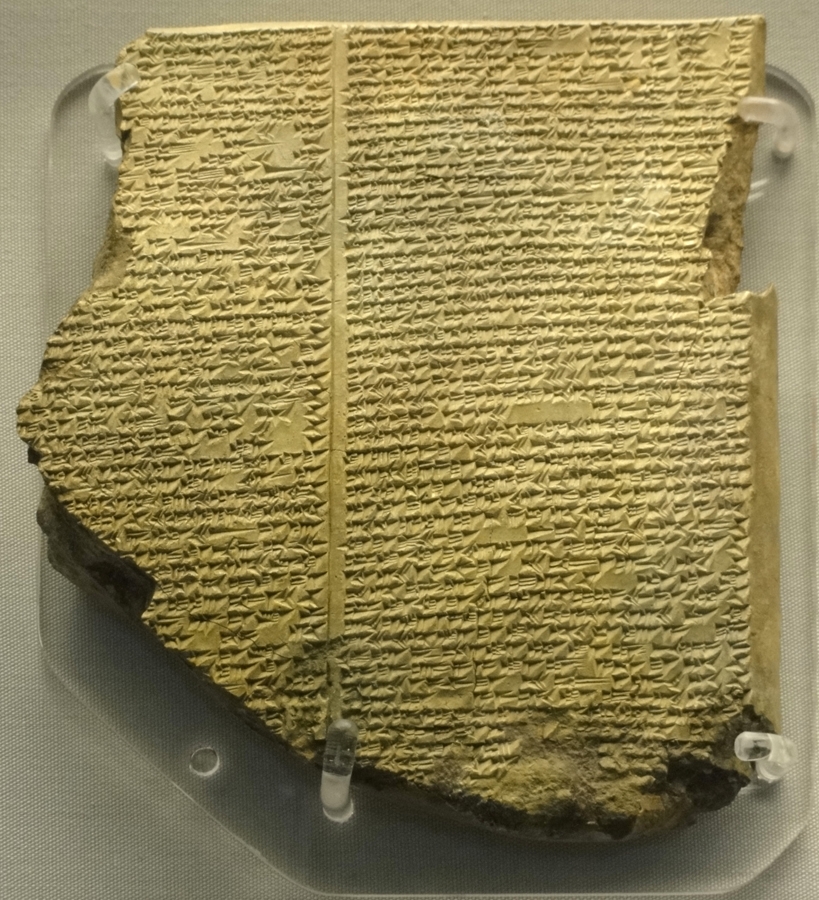
The Library of Ashurbanipal, is important in many aspects. Not just it gives multitude of vast information regarding people of the time, their lifestyle and their interest, but also established the concept of accumulation of diverse information in one place, which later would form the modern concept of Library. It is also widely believed that Alexander the great, came to know about this Library and was greatly impressed. Influenced by the great king and his incredible library, he decided to form his own Library - The Library of Alexandria.
“Great minds think alike” or they seem to appear so. Alexander the great was student of Aristotle (who was a student of Plato, who in turn was student of Socrates), so it was just natural that the emperor would not just try to conquer new lands and his deep desire for accumulation of wealth, would just be restricted to material things. He was also an ardent admirer of wisdom and his craving for knowledge was just like his desire for wealth and riches- endless. So when he came to know about the Library of Ashurbanipal, it was essential, that he too should have the greatest library of his time, to his name. With this conviction, the development of Library of Alexandria began.
The library was dedicated to Muses - the Greek goddess of literature, science and arts. Although the idea of the library was envisioned by Alexander, the great - but he died before the library became functional. It was under the supervision of Ptolemy 1st, a trusted general and friend of Alexander, who later as successor of Alexander, became king of Egypt, that the construction of Library was completed. Ptolemy 1st, shared the enthusiasm of the former emperor, as far as the library was concerned. He soon tried to collect all the information and knowledge, that was available at that time, but 2300 years ago, it was certainly not an easy job to collect so much information under one roof.
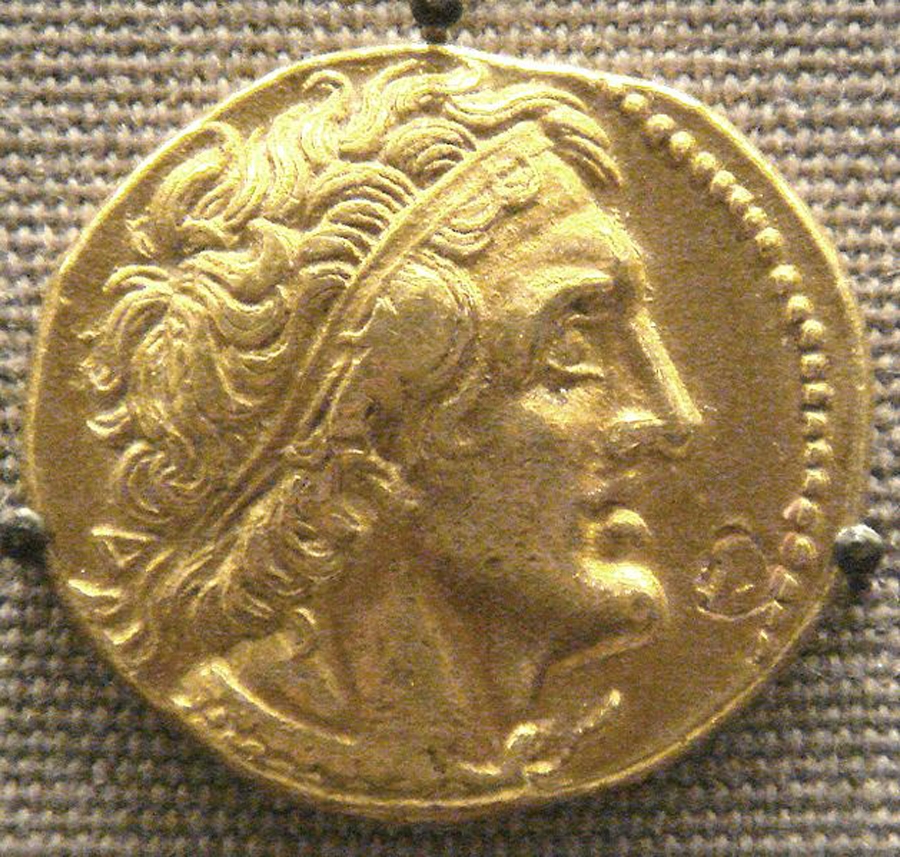
Ptolemy 1st - the new king set out on this arduous task and the construction of the library was completed in 283 BC in a city, located at sea coast and named after his friend and emperor - Alexander. The king used all the resources available to him, to ensure that the library was filled up with all the important information available (in form of scrolls) of Greece and Egypt. He also invited all the important scholars of the time, to come to city of Alexandria to live, and to study at the library and contribute their own knowledge and experience, which would increase it’s richness. All these endeavours were done at the royal expense.
The lecture halls, reading rooms, meeting rooms and gardens provided an amicable atmosphere for growth of knowledge and culture. Slowly over time, the contents of library grew in quantity as well as quality. Soon the Musaeum - a famous research institution of the time, which boasted of having the best scholars of astronomy, mathematics, philosophy, engineering, physics, geometry, geography, physiology, medicine and thinkers of the ancient world ; grew around the Library and included it.
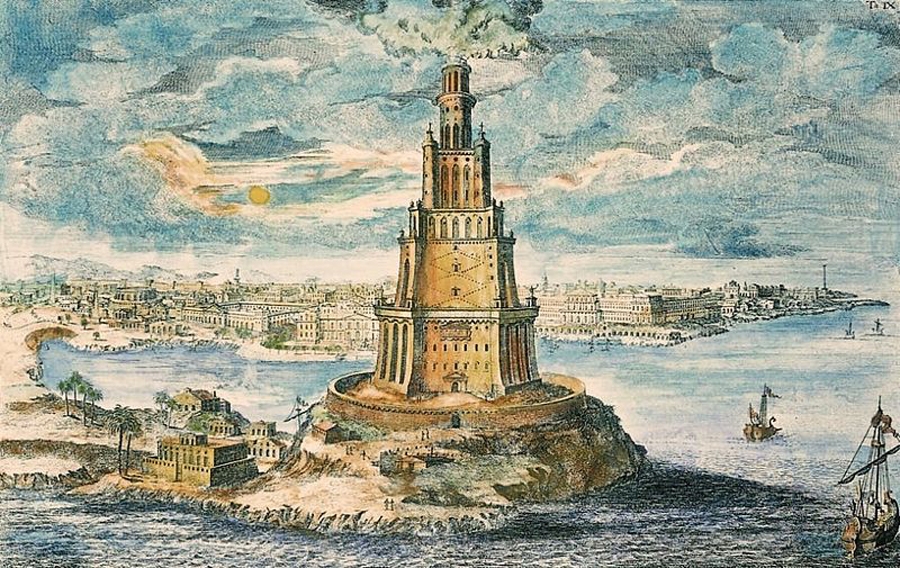
Some of the scholars associated with the Library, gave unbelievable scientific inventions, which were radically advanced for those times. It is believed the scholar Eratosthenes (who was also one of the head Librarian) in 235 BC had already discovered that the world was round and had calculated it’s diameter as well as circumference to a great degree of accuracy. Heron of Alexandria created the worlds first steam engine. This information was lost and would be reinvented again, more than a millennia later. The inventions and findings of Euclid and Archimedes are taught in school, even in the modern world.
The subsequent rulers of Egypt, the descendants of Ptolemy 1st, continued the tradition set by the 1st king of their dynasty and kept on finding new ways to improve the content of the Library. As Alexandria was a port city, ships from different parts of the world, passed through the city. Ptolemy the 3rd, made a rule that all ships passing through the city, should surrender their books to the Library. The writers working there, would copy the book manually & return the copy to the original owners, while retaining the original material.
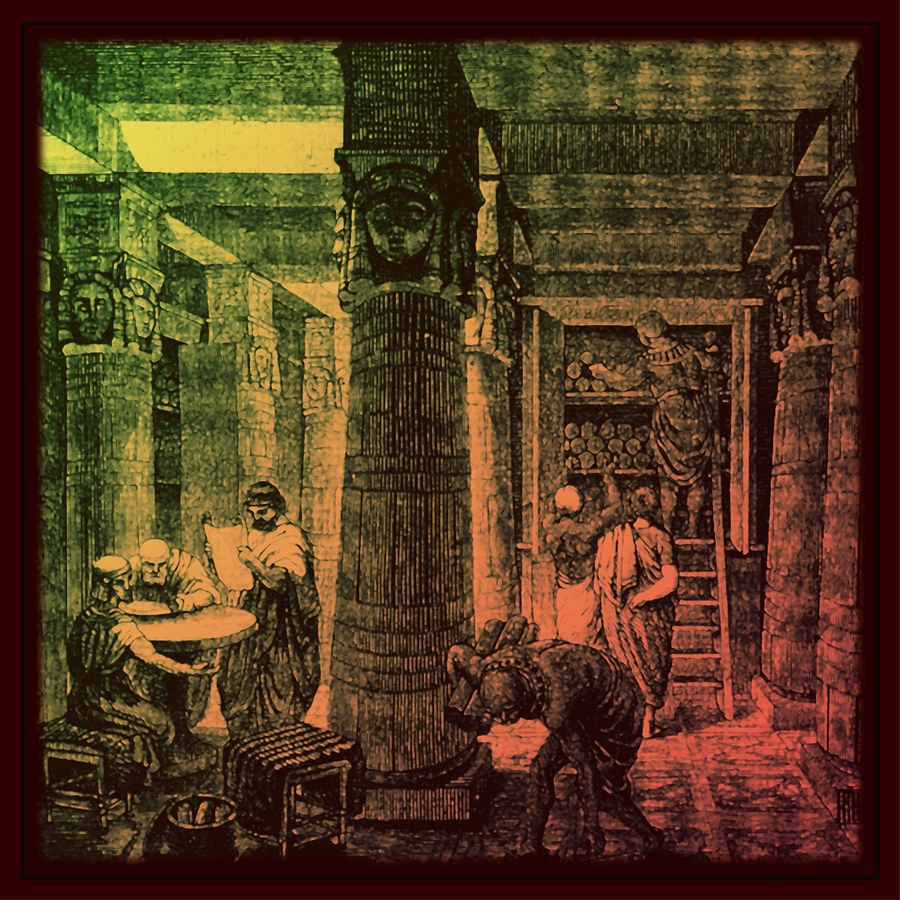
The Kings of Ptolemy dynasty also sent their hired workers, who ventured to nearby dominions searching for new books. The number of papyrus, in the library soon grew to number in hundreds of thousands. These although increased the spectrum of subjects, for which scrolls could be found but made it difficult for an individual, to search for information about a particular subject. This problem was solved by a scholar- Callimachus of Cyrene, who created a 120 volume catalogue describing in detail, about location of library contents, as based on subjects. This would serve as a future plan for the Libraries that came later.
For almost 3 centuries, the library flourished and the city prospered. The end of the great Library occurred in multiple stages. The first calamity came in form of Julius Caesar in 48 BC, when the famous Roman general reached Alexandria, as a result of the civil war which had engulfed Rome. In one of these confrontations, he set fire to the ships present in the harbour of Alexandria. Unfortunately the fire spread to the beach city and the ancient library of Alexandria suffered partial damage. However the Library struggled to thrive and scholars continued to visit the Library.
The fate of Alexandria, was inevitably bound to the fate of the kingdom of Egypt and it’s reigning monarch - the pharaohs of Ptolemaic dynasty. After death of Julius Caesar, the confrontation between Queen Cleopatra & Marc Anthony in one side and Augustus Caesar on another; led to death of the rulers of Ptolemaic dynasty and direct control of Egypt by Rome in 30 BC . With this the fate of the Library of Alexandria was also sealed.
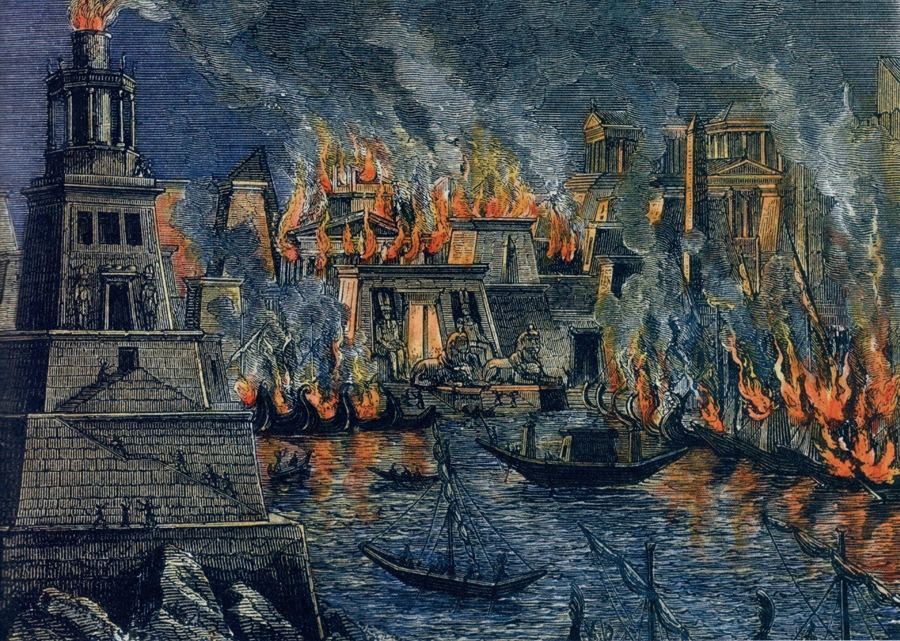
While the condition of Library gradually deteriorated over the next few centuries, it was the rise of new religions, which would sound the death knell for the ancient establishment, which was once described as “The place for the cure of the soul”. Roman Emperor Theodosius 1st , made all religions except Christianity illegal, and by act of commission and omission, caused the destruction of all temples, institutions and events ; which were concerned non Christian- this included the Library of Alexandria too. Couple of centuries later, Arab military commander -- Amr ibn al As, who conquered Egypt, wiped out the library from the face of the world.
This Library, was a serious competitor to the Library of Alexandria, which was established almost a century before. The Library of Pergamum was one of the best of it’s time and came second only to Library of Alexandria, in terms of quality and quantity. This ensured that the city of Pergamum became a great cultural centre of it’s time, second only to Alexandria. Besides the Library, the city also became famous for many architectural and sculpture masterpieces, which were made here. The historical city also finds mention in the New Testament of Holy Bible.
Pergamum (sometimes also called Pergamon) was a ancient Greek city, founded sometime before Alexander’s death. This ancient city corresponds to the modern day city of Bergama, in Turkey. In ancient times, this place was a rich and powerful city, which came into Greek dominion after Alexander the great, conquered it and the nearby areas; from the Persians- who controlled the area, at that time.
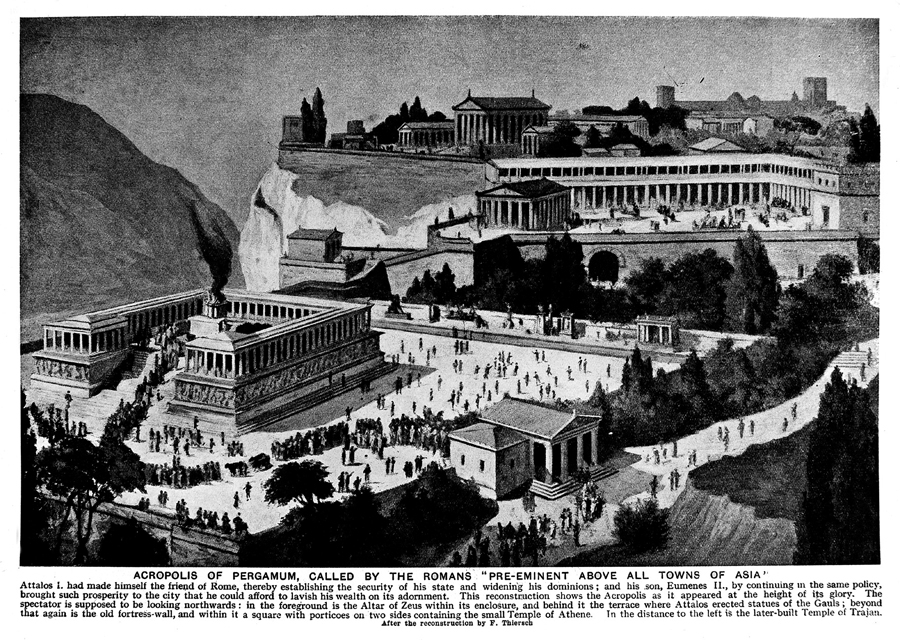
The Library was built by the King Eumenes II, who ruled Pergamon from 197- 159 BC. Over the ages the Library prospered thanks to Royal patronage. Much of the description of this Library comes from the writings of the ancient biographer and writer - Plutarch. In it’s heyday it was believed to have contained a vast collection of materials, approaching around 200,00 in number. The Library complex consisted of 4 rooms, with the reading room being the largest.
In contrast to papyrus scrolls of Library of Alexandria, the writings here were on Parchment - which happens to be writing material made from skin of animals like - sheep, goat and calves. They were carefully stored in shelves, which were placed approximately fifty centimetres from the outer walls of the Library, which helped in air circulation. This arrangement was done for library preservation, to minimise the humidity, which occurred in the warm climate of Pergamum.
With the city later going into Roman hands, it’s decline began. It is also believed that when the Roman general - Mark Antony married Queen Cleopatra of Egypt, he gifted great many collections of this Library, to the beautiful Queen. This was done as a gift to the Queen, who wanted to improve the standards of Library of Alexandria as the Alexandrian Library had suffered damages previously, when Julius Caesar had set fire to ships docked in port of Alexandria.
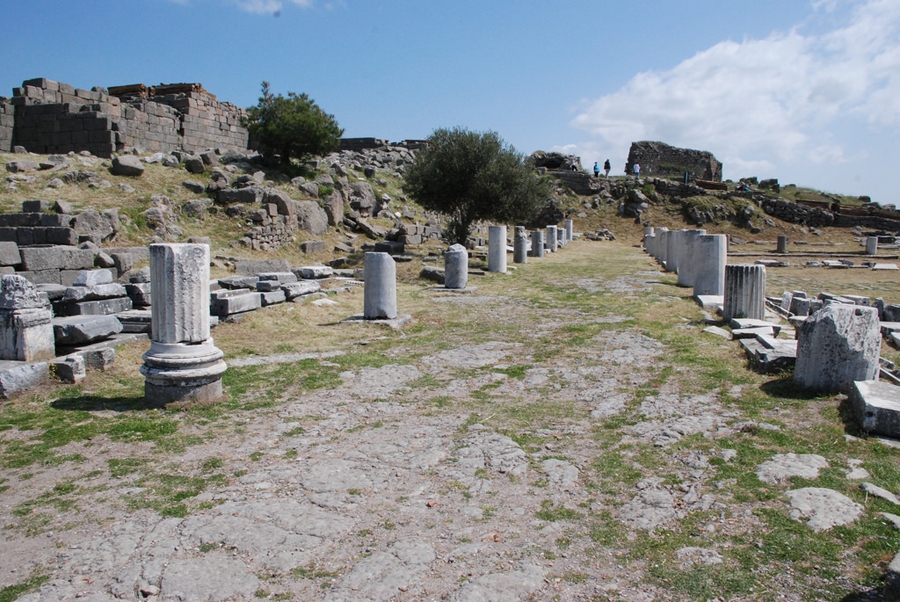
With passage of time, the Library and the city faded into oblivion. Presently the city of Pergamum and it’s library form a major site of archaeological interest in modern day Turkey.
The story of the ancient city of Pompeii, which was destroyed by volcanic eruption of Mount Vesuvius is very popular thanks to multiple description in history books, media and folk culture. The story of Pompeii became globally famous, after release of 2014 movie of same name, produced and directed by Paul Anderson. This movie beautifully showed the life of people of Pompeii and how everything was destroyed by the volcanic eruption on the fateful day of 24th August 79 AD. The city of Pompeii was vast and this sea side city had population of 11,000 before everything was destroyed by the Volcanic Eruption.
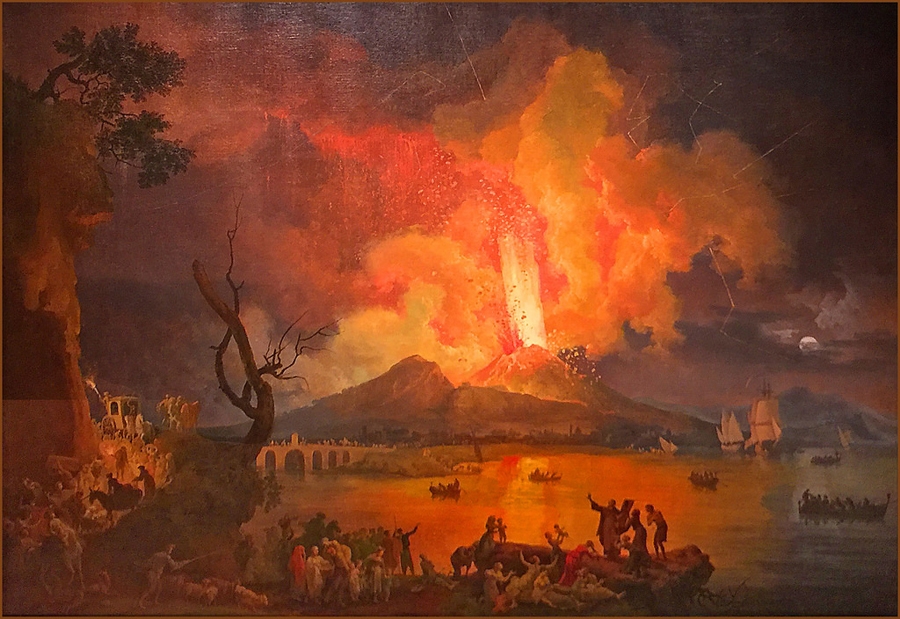
Unfortunately very close to the ancient city of Pompeii was another city, which although was smaller in size ,but was richer in culture and financial status --- the city of Herculaneum. It was in this city, a large magnificent and luxurious villa covering almost 30,000 square feet, was excavated, which contained a unique library of scrolls (also called papyri). This villa was thus came to be known as Villa of Papyri. This villa is considered important for multiple reasons. Besides the discovery of the ancient scrolls, the villa’s importance also lied in the fact that it belonged to father in law ( Lucius Calpurnius Piso Caesoninus ) of the great Roman general - Julius Caesar. This villa along with it’s surroundings was covered by a thick layer of volcanic ash after the eruption, but this also paradoxically preserved much of the artefacts.
For centuries the villa remained buried under the rubble and sands of time till the beginning of 18th century when the city of Herculaneum was accidently discovered ( 1709) by workers digging a well in the area. Further excavations led to the discovery of Villa of Papyri in 1750 and it’s library couple of years later. Slow and expert evacuation led eventually to discovery of 1800 scrolls. The extreme heat of the volcanic ash had turned these scrolls into cylindrical lumps of burnt mass, which were beyond recognition. After much deliberation the true nature of these scrolls were identified.
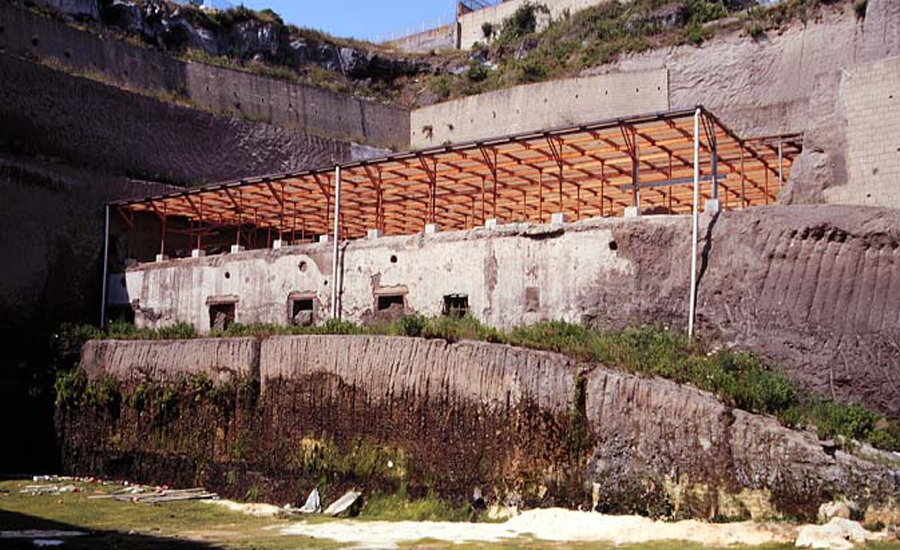
It was very difficult to unroll these burnt scrolls, which had stayed in that condition for more than a millennia. Many of these ancient artefacts were unfortunately damaged. In the course of time many new inventions helped the archaeologists to uncover the secret of these artefacts. These included special unrolling devices, X rays, digital photography, and even microscopy. Computer enhancement with multi spectral imaging has helped in many cases, to understand the scrolls, as the ink becomes legible. In spite of all these efforts, many articles still remain unreadable. Besides the scrolls the villa also provided multiple pieces of art, including magnificent statues, busts and sculptures; many of which are now conserved in Naples National Archaeological Museum.
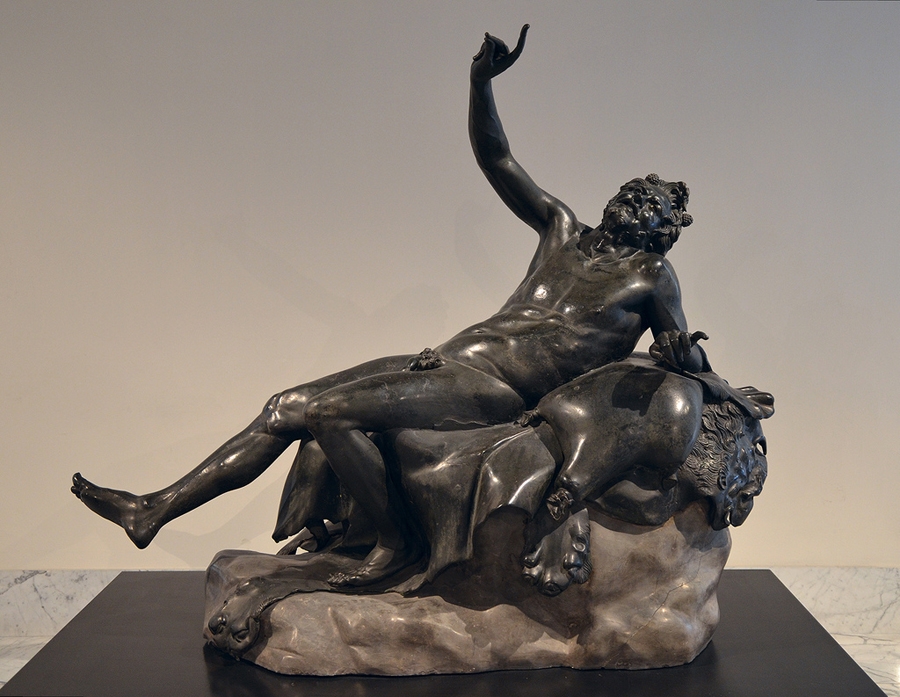
Although the number of Papyrus obtained from this villa was small (only around 1800 ) and the scrolls were mostly of philosophical character, they were of exceptionally high literary standard. These scrolls brought to light, the incredible brilliance of the man, who was the brain behind these scrolls - Philodemus of Gadara, a famous poet and philosopher of his time. This library also achieves considerable importance in the light of the fact, that it is the only surviving library of antiquity, a period which is characterised by glorious period of Greco- Roman civilization (a period extending from 8th century BC to 6th century AD). For all these reason the place has also been recognized as UNESCO World Heritage Site.
It is not surprising that the development of the libraries, in different civilizations all across the world coincided with establishment of the greatest Libraries of the concerned cultures. The House of wisdom, was established by Caliph Harun Al Rashid (reigned 786- 809 AD) in 8th century, as Intellectual centre in Baghdad (Iraq)in a period widely recognized as the Islamic Golden Age. The Caliph- Harun Al Rashid was a wise and erudite ruler and his rule was noted for it’s scientific, cultural & religious prosperity. The historical ruler became a legend, because of the famous fictional stories of- Arabian Nights, a book which had stories set in the Caliph’s magnificent court. Many of these stories, of this fairy tale masterpiece are based on Harun al Rashid’s life - some real & some imaginary.
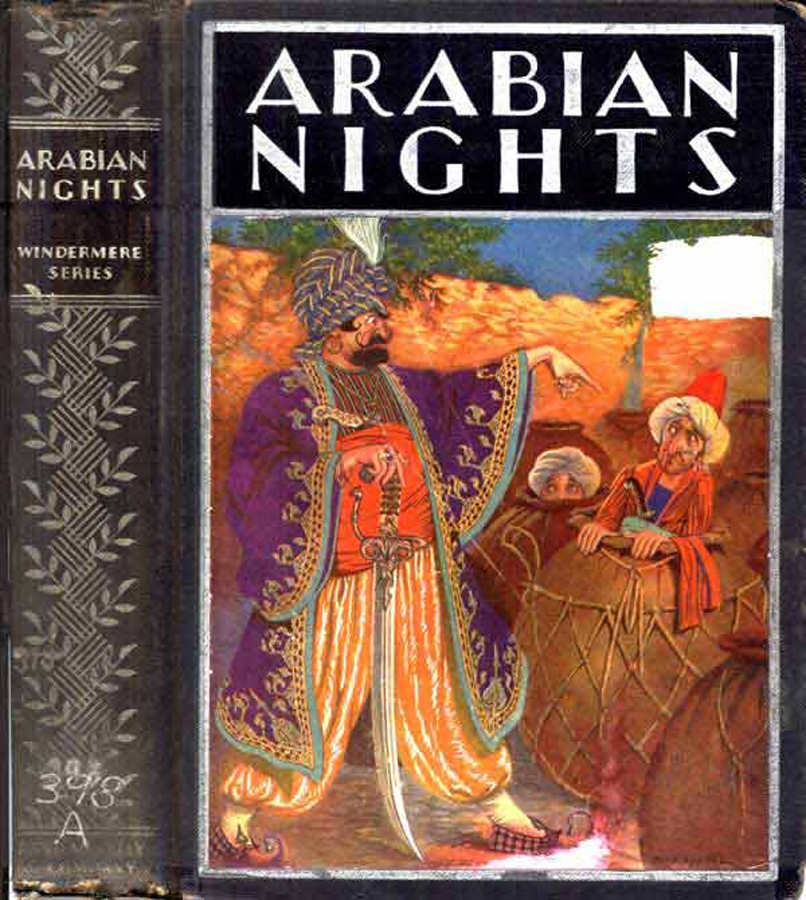
The Library’s start was rather humble. Harun al Rashid started collection of manuscripts and books, which he inherited from his ancestors, in one place. Over the time, the collection began to increase considerably resulting in the Caliph’s son and new ruler - al Ma’mun making significant increase in infrastructure of library, in form of additional buildings. The new ruler al Ma’mun like his father was not a just an efficient ruler, but also shared his enthusiasm for scholarly pursuit. Well versed in different subjects like astrology, philosophy and medicine ( which were taught in house of wisdom ), he himself interacted with the different scholars, held regular discussions & learned their views. He spared no expense in developing the house of wisdom, which involved buying books from other countries/cultures( like Greek, India and Egypt ) & sometimes even paying scholars in gold, for their services for translation of text from Chinese, Sanskrit, Persian and Greek culture; and other academic activities.
Time slowly changed the library into a large academy & one of the greatest centres of wisdom in the region. The house of wisdom encouraged and supported scholars in their pursuit of knowledge in diverse subjects like - astronomy, science and medicine. The scholars from the library, also worked as Doctors, Engineers and Architects - depending on their subject of expertise. They were also instrumental in developing the first astronomical observatory in Baghdad.
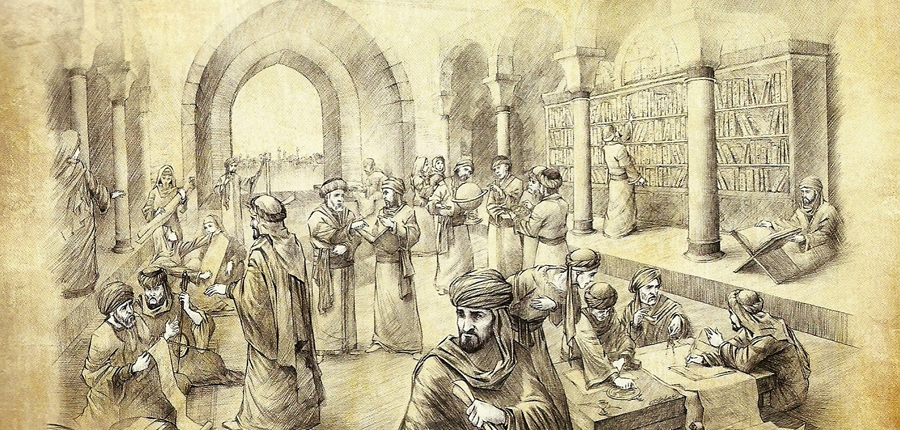
The prosperity of the city of Baghdad contributed greatly for creation of atmosphere, where scholars could pursue their quest for science, philosophy and arts. Different group of workers were employed in house of wisdom, to make it a regional centre of excellence. Translators, writers, researchers and scientist received patronage and financial benefits. Books from different parts of the world were translated, to help spreading knowledge among the population.
The centre was much advanced for it’s time. There was no gender bias and both men and women were welcome, in house of wisdom. No discrimination was done based on religion or ethnicity. This encouraged scholars from different parts of the world to come and work here ; the result was a multilingual atmosphere, with free use of Greek, Latin, Aramaic, Hebrew, Farsi and Arabic. This free intermingling of people of different religious and cultural background, encouraged new findings and their use. One of the direct result of this was that - paper began to replace parchment, made from animal skins, as medium of writing.
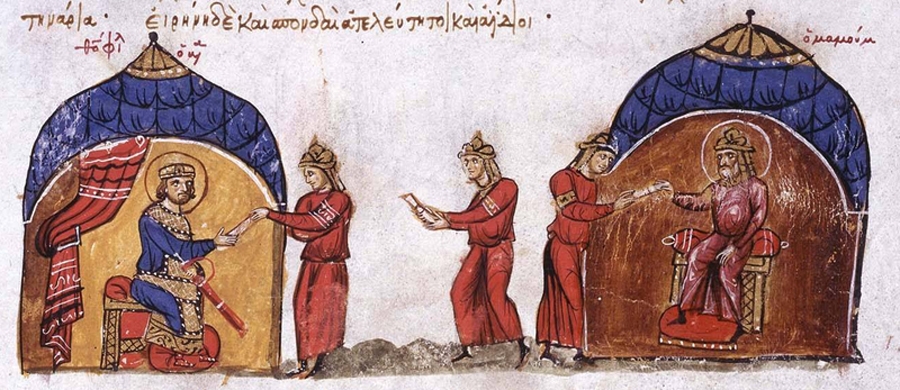
The royal administration employed and supported many erudite academician for the translation of the works of great western & Asian masters. Scholars like - Abu Yousuf Yaqoub Al Kindi were entrusted with translating the works of the Greek scholar - Aristotle. Hunayn ibn Ishaq was responsible for translation of all Greek medical books, including those of Galen and Hippocrates. Sabian Thabit ibn Qurra was responsible for translation of work of Greek greats like - Archimedes, Euclid and Ptolemy. The work of great Indian scholars like– Sushruta and Charaka (Medicine), Aryabhata and Brahmagupta(Mathematician/Astronomer) were also translated to Arabic . Thus house of wisdom also served as a bridge, which helped in spreading information, about the works of the scholars of different cultures who lived in ancient past ( by it’s translation) for the future generations.
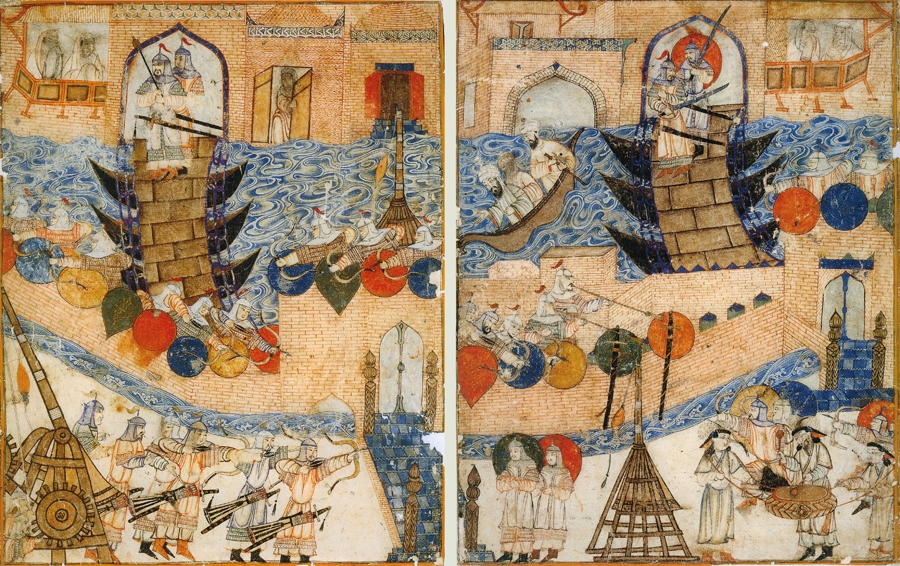
The House of Wisdom, prospered for many centuries and became a beacon of knowledge and wisdom for people across culture and time. Unfortunately all good things end and civilizations always falls under onslaught from barbarians. The same misfortune befell - House of Wisdom. In 13th century Mongol horde swept across the length and breadth of Asia (& even parts of Europe). It was during one of such conquest that, Baghdad fell into the hands of the invaders. The year 1258 AD, was the dark chapter, which saw the total destruction of the Library and slaughter of the royal family, scholars, soldiers & ordinary citizens.
The modern city of Istanbul was earlier famous as Constantinople, the capital of Eastern Roman Empire, and was named after the it’s founder - Emperor Constantine in 330 AD. The son of Emperor Constantine - Emperor Constantius II, is credited with the creation of the imperial Library Of Constantinople, between 353 - 357 AD.
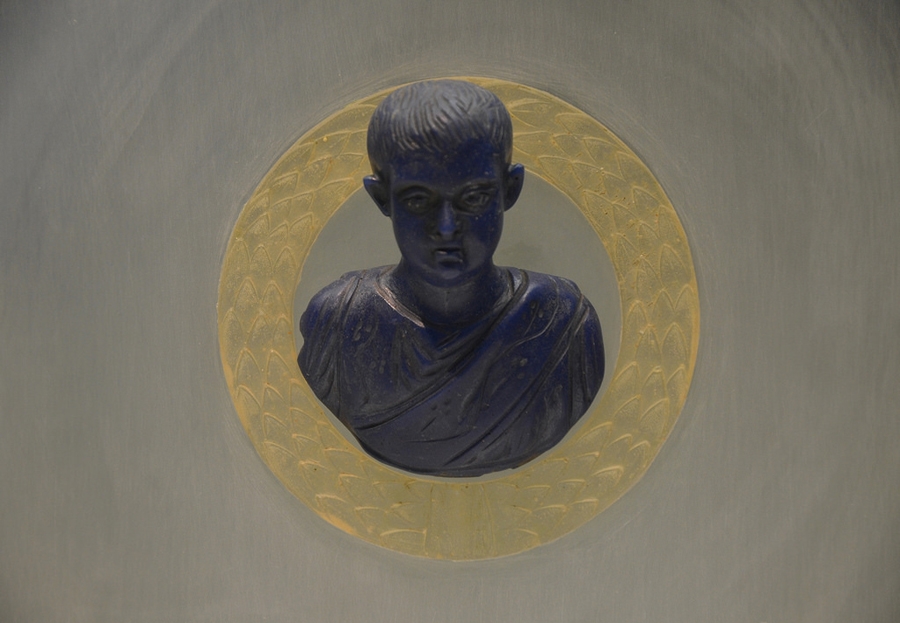
The importance of the Library lies in two important facts
1) The Emperor Constantius II, knew the significance of ancient Greek scholars and their work, which manifested in form of their writings . So efforts were made by the administration to protect and spread this knowledge, by making duplicates of the original Greek work written in papyrus (which were easily destroyed) to their copy in parchment(which were longer lasting) . All the information, the modern world has about ancient Greek classics are derived from these copies in - Imperial Library Of Constantinople.
2)The Library also assumes significance, because it was the last of the great libraries of the ancient world and survived for many centuries after, the Library of Alexandria & Pergamum vanished from the face of the earth.
The Imperial Library contained more than 100,000 volumes of ancient scholarly work in it’s heyday. Many ancient Greek writings, written by authors like - Homer, who lived centuries ago, were preserved here. Also writings describing history of Hellenistic period (the period between death of Alexander the great and beginning of Roman Empire) were also carefully preserved.
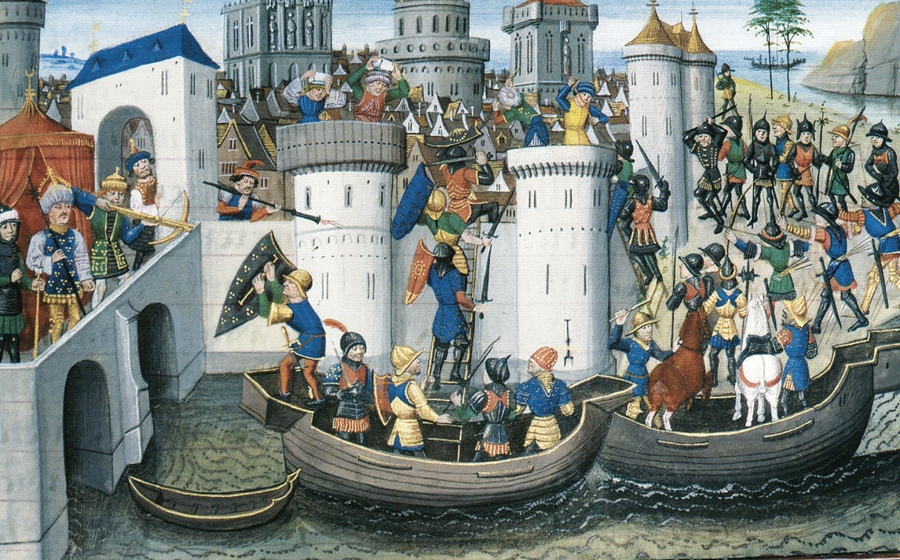
The end of the Library came because of multiple incidents. The first tragedy struck in the year 473 AD, when fire was responsible for destroying almost 120,000 pieces of scholarly articles. But the efforts of some dedicated workers, ensured that some works were saved & recopied, ensuring continuity of the Library. The year 1204 AD, brought another misfortune to the library, when the city of Constantinople fell to the army of the 4th crusade invaders. Their sacking of the city and ensuing fire damaged much of the Library. The Library still retained some amount of academic- scholarly texts, but that would be totally destroyed couple of centuries later, when Constantinople was conquered by the Ottoman Turkish empire in 1453 AD.
The libraries spread around the world, with different cultural background had some common features. They all were founded by a powerful ruler, whose passion for knowledge was no way less in their ambition for power. A single individual was responsible for creation of an ideal atmosphere, where many other like minded individuals would aggregate to create a centre of excellence. But over time, the legacy of the founder would fall week, in absence of an able legacy holder. All these centres of excellence fell to ravaging barbarians or people, who viewed this ancient legacy as threat to their sovereignty, rather than a source of pride.
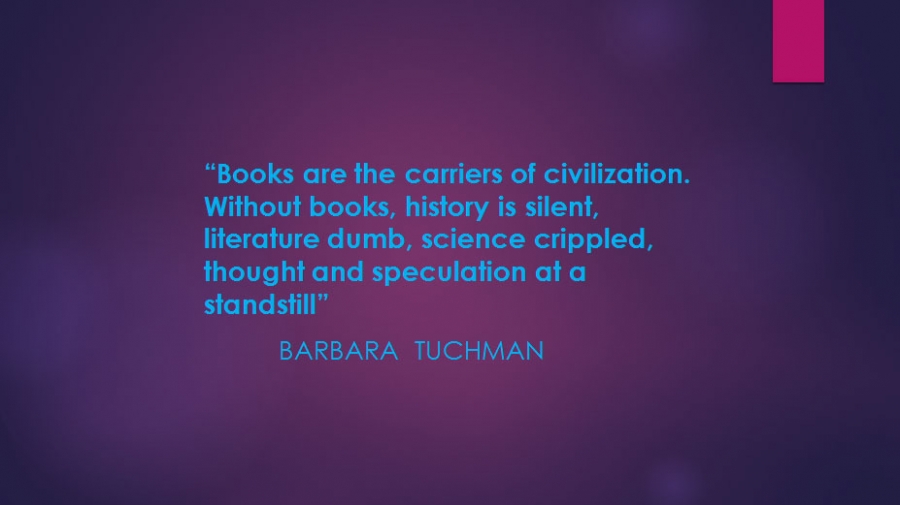
The ages of these ancient centres of wisdom and brilliance are long gone and in modern age we may have more information & knowledge than those ancient scholars. Modern technological advancements have made possible for collecting, storing and spreading and preserving information more efficiently and with multiple complicated options, compared to those ancient papyrus scrolls. But a few things still remains the same as they were thousands of years ago. Arrogant belief that knowledge of the past is obsolete, still plagues human race. Animosity between cultures and resulting conflicts, always gives rise to fear of knowledge, specially the kind which is treasured by one’s opponent. These make people act in the same way, as our ancestors thousands of years ago. So these things really make a person ponder, if our future would be any way different from our History? Because the only thing we learn from history is that, we learn nothing from history.
(Disclaimer - There were many other Libraries in the ancient world, than just the ones discussed. But discussing all of them is not feasible, nor practical . Only select ones, which left a permanent imprint in sands of time have been described.)